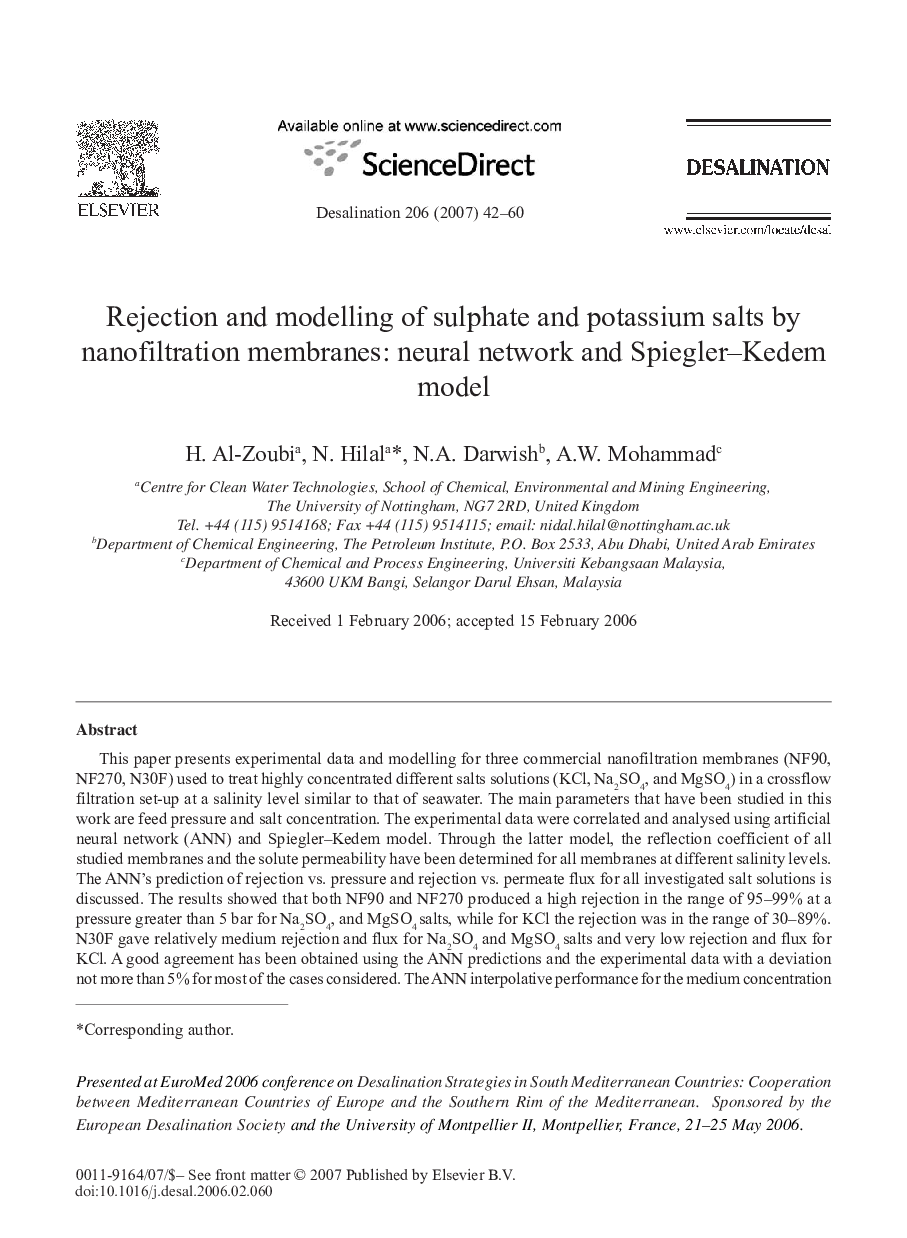| Article ID | Journal | Published Year | Pages | File Type |
|---|---|---|---|---|
| 628403 | Desalination | 2007 | 19 Pages |
This paper presents experimental data and modelling for three commercial nanofiltration membranes (NF90, NF270, N30F) used to treat highly concentrated different salts solutions (KCl, Na2SO4, and MgSO4) in a crossflow filtration set-up at a salinity level similar to that of seawater. The main parameters that have been studied in this work are feed pressure and salt concentration. The experimental data were correlated and analysed using artificial neural network (ANN) and Spiegler–Kedem model. Through the latter model, the reflection coefficient of all studied membranes and the solute permeability have been determined for all membranes at different salinity levels. The ANN’s prediction of rejection vs. pressure and rejection vs. permeate flux for all investigated salt solutions is discussed. The results showed that both NF90 and NF270 produced a high rejection in the range of 95–99% at a pressure greater than 5 bar for Na2SO4, and MgSO4 salts, while for KCl the rejection was in the range of 30–89%. N30F gave relatively medium rejection and flux for Na2SO4 and MgSO4 salts and very low rejection and flux for KCl. A good agreement has been obtained using the ANN predictions and the experimental data with a deviation not more than 5% for most of the cases considered. The ANN interpolative performance for the medium concentration levels (which were not represented in the training phase) is shown to be of lesser quality. A comparison between ANN model and Spiegler–Kedem model is also discussed.
